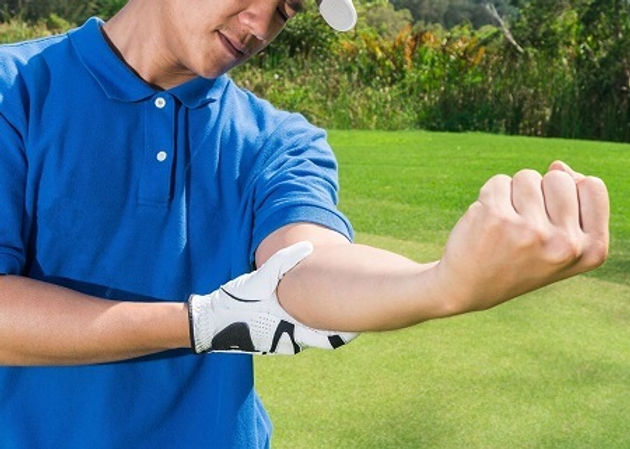Ankle Sprain
Ankle sprains are one of the most common musculoskeletal injuries, frequently occurring in sports and everyday activities. A lateral ankle sprain (LAS) happens when the foot rolls inwards excessively, leading to ligamentous damage. Understanding the anatomy, causes, symptoms, diagnosis, and management of this injury is crucial for effective treatment and recovery.
Causes of Ankle Sprains
Ankle sprains typically occur due to:
- Sudden twisting or rolling of the ankle
- Walking or running on uneven surfaces
- Poor footwear or inadequate support
- Weak or imbalanced ankle muscles
- Previous ankle sprains increasing susceptibility
Symptoms of Ankle Sprains
The severity of symptoms depends on the grade of the sprain but commonly includes:
- Pain and tenderness around the lateral ankle
- Swelling and bruising
- Reduced range of motion
- Difficulty bearing weight
- Instability of the ankle joint
Most Commonly Injured Ligament in a Lateral Ankle Sprain
The anterior talofibular ligament (ATFL) is the most frequently injured ligament in a lateral ankle sprain. The ATFL is a key stabiliser of the lateral ankle and is most vulnerable when the foot is plantarflexed and inverted.
Grading an Ankle Sprain and Its Clinical Importance
Ankle sprains are classified into three grades based on the severity of ligament damage:
- Grade I: Mild stretching of the ligament with minimal swelling and tenderness; no instability.
- Grade II: Partial ligament tear with moderate swelling, bruising, and pain; mild to moderate joint instability.
- Grade III: Complete ligament rupture with severe swelling, pain, and significant instability.
Clinically, grading is important as it influences management decisions and rehabilitation timelines. Grade I injuries typically recover within 1-2 weeks, whereas Grade III injuries may take several months and sometimes require surgical intervention.
When to Order an X-ray: Ottawa Ankle Rules
X-rays are necessary to rule out fractures in certain cases. The current best practic guideline are know as the ” Ottawa Ankle Rules“, which indicate an X-ray is required if:
- There is tenderness at the posterior edge or tip of the lateral or medial malleolus.
- The patient is unable to bear weight for four steps immediately after the injury and during examination.
- There is tenderness at the navicular bone or base of the 5th metatarsal.
Best Practice Management for an Acute Ankle Sprain
The PEACE & LOVE framework is the current best practice approach:
- Protection: Avoid excessive weight-bearing in the first few days.
- Elevation: Reduce swelling by keeping the ankle above heart level.
- Avoid Anti-Inflammatory Medication: NSAIDs may impair healing.
- Compression: Use an elastic bandage to control swelling.
- Education: Inform the patient about the recovery timeline and self-care.
After the initial phase, focus shifts to LOVE:
- Load: Gradual reintroduction of movement and weight-bearing.
- Optimism: A positive mindset promotes better recovery.
- Vascularisation: Encourage pain-free cardiovascular exercises.
- Exercise: Rehabilitation exercises restore strength, balance, and mobility.
Hands-On Treatment Techniques
At In Good Hands Chiropractic, we offer a variety of evidence-based hands-on techniques to accelerate healing and restore function, including:
- Dry Needling: Targets muscle tightness and trigger points to alleviate pain and enhance mobility.
- Shockwave Therapy: Stimulates tissue repair and reduces pain in chronic cases.
- Strapping/Taping: Provides additional support and stability to the injured ankle.
- Manual Therapy: Techniques such as joint mobilisation and soft tissue release help improve mobility and reduce stiffness.
Rehabilitation Exercises
To ensure a full recovery and prevent future injuries, a structured rehabilitation program is essential. Recommended exercises include:
- Range of Motion Exercises: Gentle ankle circles and alphabet tracing with the foot.
- Strengthening Exercises: Resistance band exercises targeting the peroneal muscles.
- Proprioceptive Training: Balance exercises such as single-leg stands and wobble board training.
- Functional Movements: Gradual return to walking, jogging, and sport-specific drills.
Conclusion
A lateral ankle sprain, particularly involving the ATFL, requires accurate diagnosis and appropriate management to prevent chronic instability. At In Good Hands Chiropractic, we provide expert assessment, Pain relief and tailored rehabilitation plans to ensure effective recovery from ankle injuries. If you are experiencing ankle pain or instability, book a consultation with us today for professional care and guidance. Give us a call on 0406230393 or book online.












